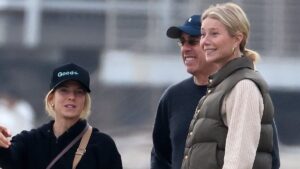
On the International Space Station (ISS), where the line between routine and remarkable often blurs, Expedition 73 flight engineer Mike Fincke of NASA captured the essence of space life in a social media post. “Retro blue headband on, hard drive in hand — science and repair in the same orbit,” he wrote, emphasizing the importance of versatility in space. “Every skill we sharpen here points us toward the Moon… and beyond to Mars.”
From conducting ultrasounds to assembling spacesuits, the seven-member crew of Expedition 73 has been busy this week, balancing scientific research with the maintenance of the space station. Their activities underscore the dual nature of life in orbit: a blend of rigorous science and the awe-inspiring views of Earth and the cosmos.
Orbital Observation: A View Like No Other
JAXA astronaut Kimiya Yui shared his own reflections on the unique experience of observing Earth from space. “Yesterday [Aug. 11] was a very busy day on the ISS. But we got through it by helping each other as a crew!” Yui wrote on social media. Despite the hectic schedule, he managed to capture the breathtaking views from the ISS, noting, “The collaboration between Earth and the starry sky is simply the best.”
Yui’s photos, taken before bedtime, reveal a serene yet dynamic environment, offering a glimpse into the beauty that surrounds the crew. “I’m busy, so I don’t have time to indulge in meditation, but it’s the kind of scenery that makes you crave such moments,” he added.
Science in Space: A Week of Research
This week, the Expedition 73 crew conducted several key experiments, contributing to our understanding of human health in space. Among the projects was Ultrasound 2, where astronauts took turns scanning their necks, shoulders, and legs for blood clots. This ongoing research is crucial for monitoring astronaut health during extended missions.
The CIPHER study, or “Complement of Integrated Protocols for Human Exploration Research on Varying Mission Durations,” involves 14 different studies. This week, NASA astronaut Zena Cardman monitored her cardiovascular and respiratory fitness, while Jonny Kim collected blood and urine samples for analysis back on Earth.
Another significant experiment, ISAFE, focused on the “Investigating Structure and Function of the Eye.” Fincke and Cardman participated in this study, which involved sending signals to gauge how Cardman’s retinas responded to light.
Maintaining the Space Station
Beyond scientific research, the crew also engaged in activities essential for the upkeep of the ISS. Kim and Cardman worked on extravehicular mobility units (EMU), preparing spacesuits for upcoming spacewalks. Meanwhile, Yui swapped out computer components in the Cold Atom Lab, a device that allows scientists to observe atomic wave functions and quantum characteristics in a way that is not possible on Earth.
As SpaceX’s CRS-33 resupply mission approaches, Fincke has been busy assessing the areas where the Dragon spacecraft’s cargo will be unloaded, ensuring all tools are ready for the task.
Personal Reflections: A New Perspective
For Zena Cardman, this mission marks her first spaceflight. As the commander of SpaceX’s Crew-11, she arrived at the ISS on Aug. 2. In her first social media post from orbit, she shared a time-lapse video capturing the aurora over the South Pacific, Orion rising, and satellites in the distance. “I don’t know where to begin, so I’ll start here: my view from one Dragon to another,” she wrote, conveying the profound impact of her experience.
As of Friday (Aug. 15), there are 7 people aboard the International Space Station: Expedition 73 commander Sergey Ryzhikov of Roscosmos; fellow cosmonauts Alexey Zubritsky and Oleg Platonov; Jonny Kim, Zena Cardman, and Mike Fincke of NASA; and Kimiya Yui of JAXA, all flight engineers.
Looking Ahead: The Future of Space Exploration
The work being done by the Expedition 73 crew is not just about maintaining the ISS; it is about paving the way for future missions to the Moon and Mars. The skills and knowledge gained here will be crucial as humanity pushes further into the cosmos.
With the space station continuously crewed for over 24 years, the legacy of international cooperation and scientific discovery continues to grow. As new technologies and missions develop, the ISS remains a vital platform for preparing for the next giant leap in human space exploration.
As the crew prepares for the arrival of the next resupply mission and continues their scientific endeavors, the lessons learned and the experiences shared will undoubtedly inspire future generations of explorers.





